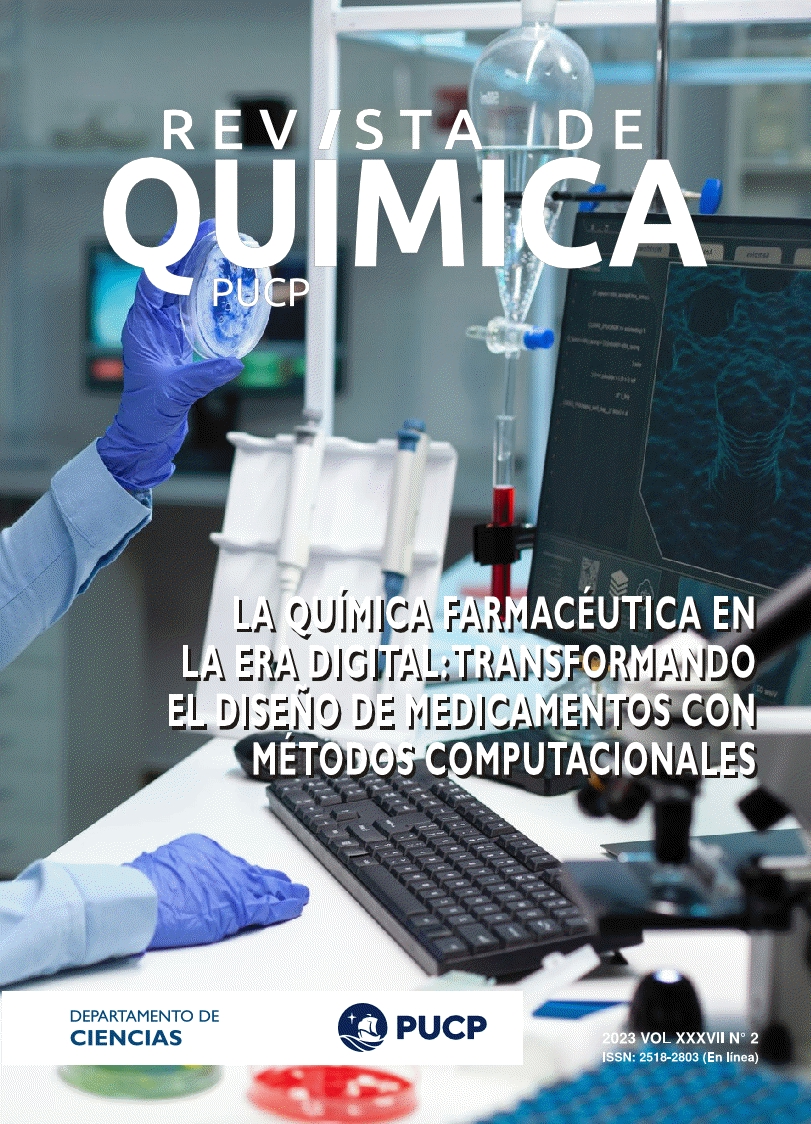La Era Digital en la Química Farmacéutica: Transformando el Diseño de Medicamentos con Métodos Computacionales
DOI:
https://doi.org/10.18800/quimica.202302.002Palabras clave:
Diseño de medicamentos, Quimica computacional, inteligencia artificial, FarmacologíaResumen
El diseño de medicamentos se ha beneficiado significativamente de los avances en la química computacional y las redes neuronales. En este artículo, exploramos el papel fundamental que desempeñan técnicas de la química computacional como la Teoría del Funcional de la Densidad (DFT), el Docking Molecular y la Dinámica Molecular (MD) en la comprensión y optimización de interacciones a nivel atómico y molecular. Además, examinamos cómo la integración de redes neuronales ha impulsado la precisión y eficiencia en el diseño de fármacos. Presentamos ejemplos concretos de proyectos de investigación que demuestran la sinergia entre estos métodos y destacan avances significativos en la búsqueda de soluciones médicas efectivas. Asimismo, discutimos los desafíos y consideraciones clave para seguir avanzando en este campo multidisciplinario.
Descargas
Descargas
Publicado
Cómo citar
Número
Sección
Licencia
Derechos de autor 2023 Jesus Valdiviezo

Esta obra está bajo una licencia internacional Creative Commons Atribución 4.0.













